
The Melbourne tramway network is a tramway system serving the city of Melbourne, Victoria, Australia. The tramway network is centred around the Melbourne central business district (CBD) and consists of approximately 1,700 tram stops across 24 routes. It is the largest operational urban tram network in the world and one of the most used, with more than 500 trams and 250 kilometres of double tram track. It served a patronage of 206 million over the year 2017-2018. Trams are the second most utilised form of public transport in Melbourne after the city's metropolitan commuter railway network.
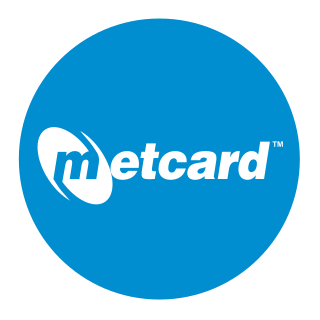
Metcard was the brand name of an integrated ticketing system used to access public transport in Melbourne, Australia. It was a universal ticket which allowed users to ride on the city's Metlink and Metropolitan Transit Authority network, consisting of suburban trains, trams, and buses, including the NightRider network. The Metcard was a credit card-sized ticket made out of cardboard and used a magnetic strip to store fare data. Metcard was operated by OneLink Transit Systems under a contract with the Government of Victoria which was managed by the Transport Ticketing Authority.

Yarra Trams is the trading name of the operator of the tram network in Melbourne, Australia, which is owned by VicTrack and leased to Yarra Trams by the Victorian Department of Transport and Planning. The current franchise is operated by Keolis Downer. As at May 2014, Yarra Trams operate 487 trams, across 26 tram routes and a free City Circle tourist tram, over 1,763 tram stops. With 250 km (155.3 mi) of double track, Melbourne's tram network is the largest in the world.

Ashburton railway station is a commuter railway station on the Alamein line, serving the eastern Melbourne suburb of Ashburton in Victoria, Australia. Ashburton is a ground-level premium station, featuring one side platform. It opened on 30 May 1890.
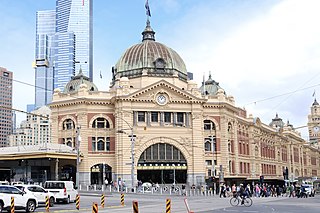
The Melbourne rail network is a metropolitan suburban and freight rail system serving the city of Melbourne, Victoria, Australia. The metropolitan rail network is centred around the Melbourne central business district (CBD) and consists of 222 railway stations across 16 lines, which served a patronage of 99.5 million over the year 2021–2022. It is the core of the larger Victorian railway network, with regional links to both intrastate and interstate rail systems.
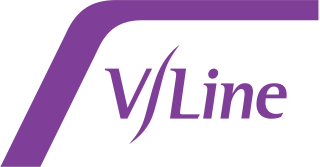
V/Line is a statutory authority that operates regional passenger train and coach services in the Australian state of Victoria. It provides passenger train services on five commuter lines and eight long-distance routes from its major hub at Southern Cross railway station in Melbourne. It also provides bus services across Victoria and into New South Wales, the Australian Capital Territory and South Australia. In addition, V/Line is responsible for the maintenance of much of the Victorian freight and passenger rail network outside of the areas managed by Metro Trains Melbourne and the Australian Rail Track Corporation.
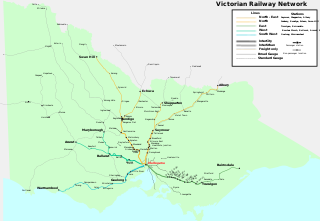
Rail transport in the Australian state of Victoria is provided by a number of railway operators who operate over the government-owned railway lines. The network consists of 2,357 km of Victorian broad gauge lines, and 1,912 km of standard gauge freight and interstate lines; the latter increasing with gauge conversion of the former. Historically, a few experimental 762 mm gauge lines were built, along with various private logging, mining and industrial railways. The rail network radiates from the state capital, Melbourne, with main interstate links to Sydney and to Adelaide, as well as major lines running to regional centres, upgraded as part of the Regional Fast Rail project.
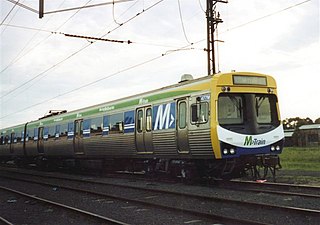
M>Train was a train operator in Melbourne, Australia, and operated some of the city's suburban rail operations. Formed in July 1998 as Bayside Trains, a business unit of the Public Transport Corporation, it was privatised in August 1999 becoming a subsidiary of National Express.
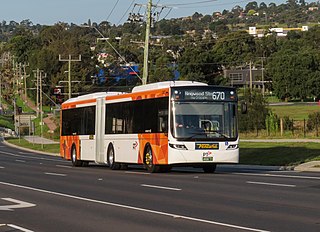
Buses in Melbourne, Australia, are a major form of public transport in Melbourne, with an extensive bus network. There are 346 routes in operation with a varying range of service frequencies, operated by privately owned bus companies under franchise from the State Government, under the Public Transport Victoria branding. The Night Network bus system consists of 10 routes and operates on Friday and Saturday nights, and a SmartBus orbital bus network currently consisting of nine routes, which is intended to facilitate cross city travel, while the current network is predominantly a radial network. Most of the bus network is a covered by the myki ticketing system.
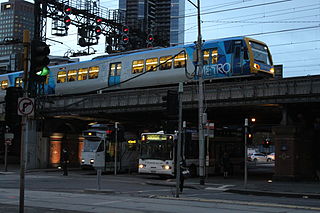
Transport in Melbourne, the state capital of Victoria, Australia, consists of several interlinking modes. Melbourne is a hub for intercity, intracity and regional travel. Road-based transport accounts for most trips across many parts of the city, facilitated by Australia's largest freeway network. Public transport, including the world's largest tram network, trains and buses, also forms a key part of the transport system. Other dominant modes include walking, cycling and commercial-passenger vehicle services such as taxis.

Myki, stylised as myki, is a reloadable credit card-sized contactless smart card ticketing system used for electronic payment of fares on most public transport services in Melbourne and regional Victoria, Australia. Myki replaced the Metcard ticketing system and became fully operational at the end of 2012.
The Transport Ticketing Authority (TTA) was a statutory authority within the Department of Transport in the State Government of Victoria, Australia. It was established in June 2003 to manage Victoria's interest in the OneLink Metcard public transport ticketing system contract, and to procure and manage the new ticketing system for Victoria, eventually known as myki.

Lynne Janice Kosky was an Australian politician and senior minister in the Government of Victoria. She represented the electoral district of Altona in the Victorian Legislative Assembly for the Labor Party from 1996 to 2010 and held key ministerial posts from 1999 through to her retirement from politics, including the key education and public transport portfolios.
Keane was a Boston-based Information Technology services unit of NTT DATA, itself a subsidiary of the Japanese national phone company, NTT Group. It offered Application Services, as well as Infrastructure and Business Process Outsourcing solutions delivered through onsite, nearshore, and offshore resources.
Public transport ticketing in New South Wales, Australia operated using magnetic-stripe technology between 1989 and 2016. This ticketing system, known variously as the Automated fare collection system, STATS and, from 2010, MyZone, was progressively replaced by a contactless smart card called Opal between 2012 and 2016.
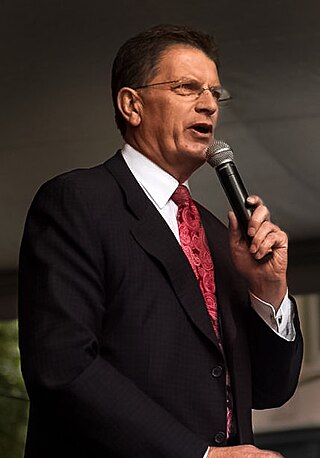
The 2010 Victorian state election, held on Saturday, 27 November 2010, was for the 57th Parliament of Victoria. The election was to elect all 88 members of the Legislative Assembly and all 40 members of the Legislative Council. The incumbent centre-left Labor Party government, led by John Brumby, was defeated by the centre-right Liberal/National Coalition opposition, led by Ted Baillieu. The election gave the Coalition a one-seat majority in both houses of parliament.

The Geelong Transit System (GTS) was the operating brand of public transport in Geelong, Victoria, Australia. It was a joint venture between the Kefford Corporation's Benders Busways, and McHarry's Buslines. From 2009, timetables and signage were branded as Geelong Transit with a standard Viclink orange theme, so it is unclear to what extent the former GTS entity still exists as such. Since 2009, GTS ticketing has become part of the statewide myki smartcard system.
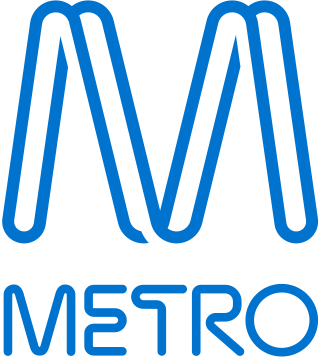
Metro Trains Melbourne, often known simply as Metro, is the operator and brand name of train services on the electrified metropolitan rail network serving the city of Melbourne, Victoria, Australia. It is the largest urban rail network in Australia, with 17 lines and 221 stations across 405 km (252 mi) of railways, and the second busiest network in Australia, with a patronage of 99.5 million as of 2021–2022.

Videlli Limited was an Australian company that developed automated fare collection systems for transit systems. Founded in 1984 as ERG, it was listed on the Australian Securities Exchange in 1985. Due to the large level of losses run up, ERG sold all the operating assets to Vix Technology in 2008, before ERG changed its name to Videlli and was delisted. Its head office was in Melbourne, Victoria.
Cubic Corporation is a global private transportation and defense corporation. It operates two business segments: Cubic Transportation Systems (CTS) and Cubic Mission and Performance Solutions (CMPS).
















